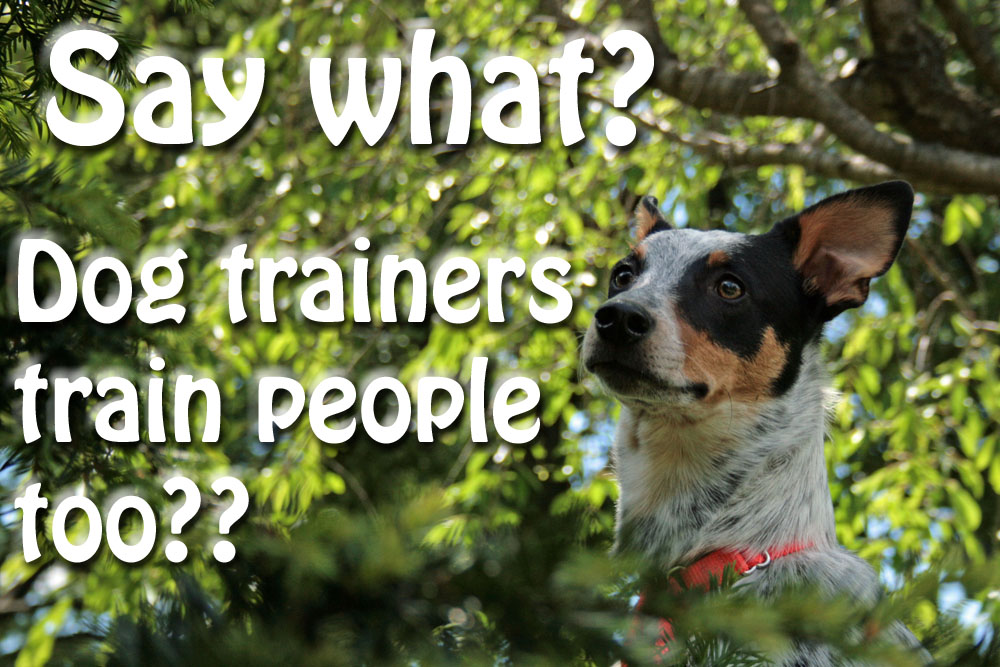 Why “dog trainer” is not the most accurate term for what I do most of the time–a tail of semantics.
Why “dog trainer” is not the most accurate term for what I do most of the time–a tail of semantics.
One of the things that can frustrate some people that take training classes with their dogs is that the “dog trainers” don’t spend enough time training their dogs. Many people come to class with the expectation that the dog trainer is going to train their dog–shocking right? I understand their confusion, I absolutely do! I go to a hair dresser and expect the hair dresser to dress my hair…. I would send my children to a teacher with the expectation that he/she will teach… so it would make perfect sense that if I sign up for a class offered by a dog trainer that I would expect the dog trainer to train my dog. It’s a problem with semantics.
There is this implication with the title “dog trainer” that the owner/handler will just get to sit idly by as the dog trainer… trains. Unfortunately, for some people, they find out the hard way that the dog trainer leading their class is not there for the dog but for them. Yes, I can and do train dogs, but when I’m in a once a week class, I am there primarily to teach the people how to train their own dogs.

Jamie and Risa working really nicely using body language and energy to further their great working bond! This is part of the human mechanics that I try to teach to students... this type of energy and body communication.
I feel like I’m frequently explaining that I’m not the one who will be training their dog everyday during the week… that it’s their job to train the dog and I’m just giving them the tools to do that. For those who are initially put-off that they have to train their dogs, they start seeing the value in taking a class when I show them how to handle the leash, the treats, the clicker effectively, how to use their tone of voice to communicate with their dogs, how to use their body positioning to influence their dog’s body positioning, and other HUMAN aspects to dog training.
A big part of successful dog training is human mechanics. From timing to energy, from body language to not fumbling with the tools–if one can’t reinforce at the right time because they can’t get their treats they are going to struggle. Most people in my classes need quite a bit of HUMAN work to start getting the doggie results they want.
Just last night in a class I was working with a woman who is not a dog person, she’s there helping a friend who has two dogs in the class. At the beginning of the class she was absolutely struggling with keeping the the focus, holding the leash, access treats, delivering treats, using a good tone of voice.. it was just not natural for her and she seemed a little frustrated that the trainers weren’t working with her dog enough. I spent the time and worked with her on all of these human things. I showed her how to hold the treats and leash in the same hand while offering a hand target with the other hand, how to use a perky, high-pitched voice to get the dog’s attention–all of these human things are crucial in her ability to train the dog. As the class went on, she was becoming increasingly successful with working with the dog. By the end of the class, it seemed like she understood the value of having a training instructor to show her how to work with the dog and was no longer upset the trainers weren’t working with her dog as much.
So while I am a dog trainer, I am also very much so a people trainer.
